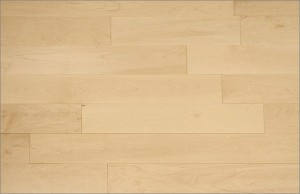Here’s the thing; I think there is a problem with the word ‘grades’, when it comes to hardwood flooring.
The very concept of grades hold all kinds of cultural weight, with one grade being all about how one particular one is better than another, kind of like how we think of grades in school. The word ‘grade’ invites you to draw a quality comparison between one thing and another.
Hardwood flooring grades misconceptions
When it comes to wood flooring, this often leads to misconceptions about quality. It leads some to think that a ‘select’ grade is a safer purchase in terms of durability than a ‘natural’ or ‘folk’ grade.
Here’s something else; when it comes to hardwood flooring, thinking about grades as a measurement of quality of the product isn’t the right way to approach the concept at all.
 But, that being said, what are grades for hardwood floors in place to tell you as a buyer of wood floors? Like many things, grading is all about your point of view, and your expectations about what a wood floor is.
But, that being said, what are grades for hardwood floors in place to tell you as a buyer of wood floors? Like many things, grading is all about your point of view, and your expectations about what a wood floor is.
What are buyers looking for?
For instance, a lot of people love the look of wood grain. But, they also want a certain sense of uniformity, and with a consistency in the grain patterns of the floor they’re looking to buy. They want tasteful refinement. In doing their research, they’ve learned that a certain measurement of color variation in a wood floor is to be expected. And they know that certain species (like cherry and maple, for instance), have naturally occurring patterning and ‘beauty marks’ no matter what section of the lumber their floor will be taken from.
After all, wood floors are natural materials. And nature is all about variation, and about natural characteristics. Yet, when it comes to the floor they imagine in their heads, it’s a more refined and and continuous floor color range and grain pattern they want. So, in looking for a hard maple wood floor for instance, they might go with this kind of look:
But, this is only one perspective.
Embrace of the random
Another point of view when it comes to wood floors is the embrace of random patterns, colors, and character. Buyers with this kind of look in mind are interested in really obvious patterning like larger knot holes, mineral streaking, and other sources of color variation. For these buyers, the wood floor they imagine in their minds tells the story of where their floor comes from; The Wild, and all of the wild artistry that a real wood floor can afford.
This type of buyer, also looking for a hard maple floor, may be more interested in this kind of look:
These two examples depicted in the above photos are the same species. The boards in a chosen batch, decided upon by a grading system, have been taken from sections of the lumber to meet the myriad of expectations of the buying public along a spectrum.
Differing expectations, varied options
And this, friends, is what wood floor grading is all about. The industry recognizes that buyers have different expectations of what a wood floor should look like. It’s not that one grade is better quality than another. It’s that a specified grade appeals to a certain set of aesthetics.
There are a few characteristics that set the standards:
- large knotholes, which are always ‘secure’ (they don’t pop out)
- small knotholes, or ‘pinholes’
- mineral streaking and other color variation
So a ‘select’ grade will have fewer instances of this. And a ‘natural’ grade (sometimes called ‘folk’ or ‘rustic’) will feature more of these characteristics proudly.
Wood floors are diverse. And luckily, the industry helps to make choosing the right look that you’re going to love pretty easy.
Cheers,
Rob.
![[object Object]](https://assets.builddirect.com/images/logo-blue.png?auto=format&fit=max&w=384)






















